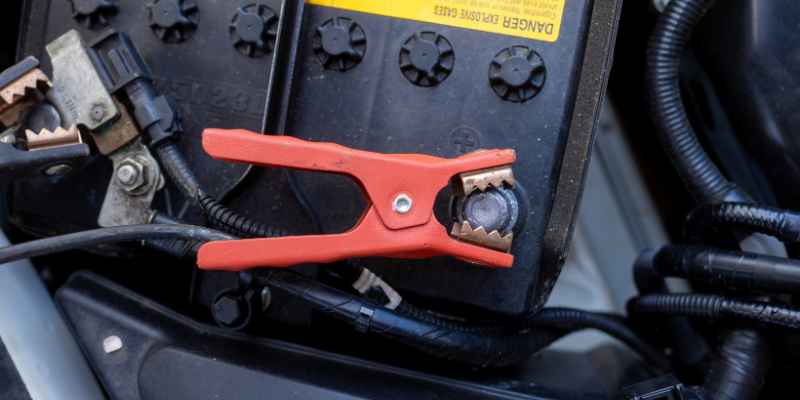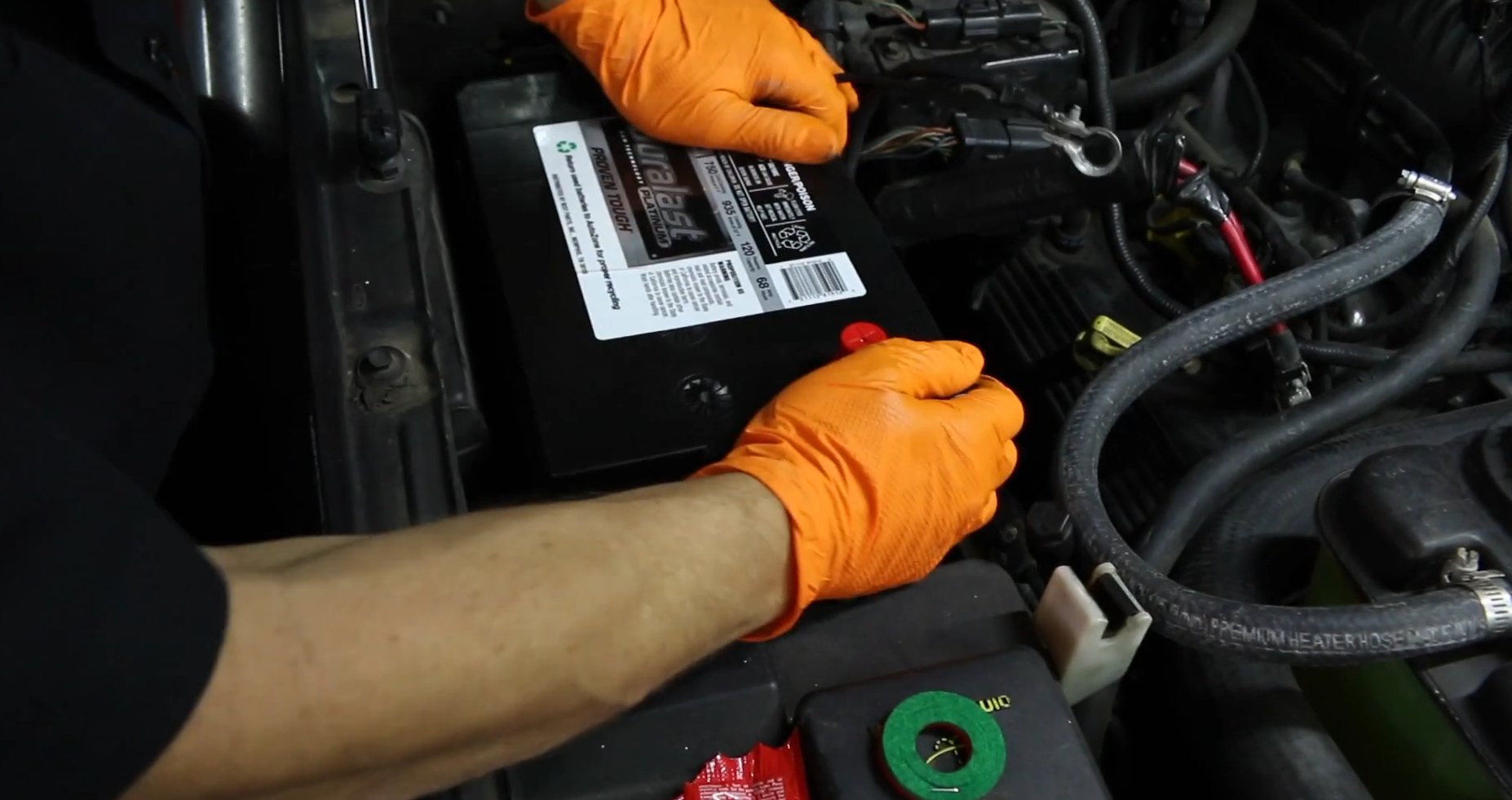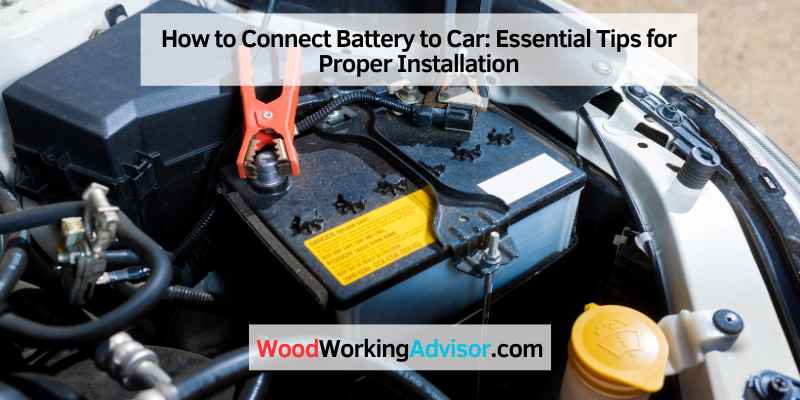To connect a battery to a car, locate the positive and negative terminals then attach corresponding cables. This provides power for the vehicle to start.
Connecting a battery to a car is a simple yet essential task for any driver. Properly attaching the cables ensures a smooth and safe start for your vehicle. In this guide, we will explore the step-by-step process of connecting a car battery, highlighting key points to remember for a successful installation.
Understanding how to correctly connect the battery will not only save you time and effort but also help prevent any potential risks or issues down the road. Let’s delve into the process and equip you with the knowledge to confidently connect your car battery.

Preparing For Installation
When connecting a battery to your car, it’s crucial to properly prepare for the installation to ensure a smooth and safe process. Here’s how you can get ready:
Choosing The Right Battery
Ensure compatibility by selecting the correct battery size and specs according to your vehicle’s requirements.
Gathering The Necessary Tools
Collect essential tools such as wrenches, cleaning solution, and protective gloves before starting the installation.
Disconnecting The Old Battery
Locating the Battery: Finding battery under the hood. Check the owner’s manual.
Identifying The Negative Terminal
- Identify the negative terminal: Marked with a minus (-) symbol
- Ensure it is not the positive terminal: Marked with a plus (+) symbol
Removing The Battery Connections
- Locate the negative terminal: Loosen the nut and detach the cable
- Move to the positive terminal: Repeat the process to disconnect
- Remove any holding brackets: Free the old battery for replacement
Installing The New Battery
Installing a new battery in your car is a simple yet important task that can help keep your vehicle running smoothly. Whether you are replacing an old battery or upgrading to a new one, following the proper steps for installation is crucial. In this article, we will guide you through the process of connecting a battery to a car, starting with positioning the battery.
Positioning The Battery
To begin with, you need to locate the battery compartment in your car. It is typically found under the hood, either on one side or at the back of the engine bay. Once you have identified the battery compartment, ensure that it is clean and free from any debris or corrosion. This will help prevent any interference with the battery’s connections and ensure a secure fit. Now, carefully position the new battery in the designated spot, making sure it is oriented correctly.
Securing The Battery
After positioning the battery, it is important to secure it tightly to prevent any movement or damage while driving. Most batteries come with a hold-down bracket or strap that holds them in place. Ensure that this bracket or strap is securely attached to the base of the battery, keeping it stable during the car’s movement. If needed, you can also use a battery hold-down kit or additional hardware to secure the battery in place. This step is essential to maintain the integrity of the battery’s connections and prevent any accidents.
Connecting The Positive Terminal
The next step is to connect the positive terminal of the battery. The positive terminal is usually marked with a “+” sign or color-coded red. Start by identifying the positive terminal on the battery and locate the corresponding positive cable. Align the positive cable with the positive terminal and firmly attach it by tightening the terminal nut or bolt. Ensure that the connection is tight and secure, as a loose connection can result in poor electrical performance or even damage to the battery.
Connecting The Negative Terminal
Finally, you need to connect the negative terminal of the battery. The negative terminal is usually marked with a “-” sign or color-coded black. In a similar manner as before, locate the negative terminal on the battery and find the corresponding negative cable. Align the negative cable with the negative terminal and securely fasten it by tightening the terminal nut or bolt. Just like with the positive terminal, ensure that the connection is tight to maintain a good electrical connection and prevent any issues in the future.
Testing The Connection
When it comes to connecting a battery to a car, testing the connection is an essential step to ensure the battery is properly installed and functioning. By testing the connection, you can verify the integrity of the electrical system and avoid potential issues that may arise from an improperly connected battery.
Double-checking The Connections
Before proceeding with testing the battery, it’s crucial to double-check the connections. Ensure that the positive and negative terminals are securely attached to the corresponding cables and that there are no loose connections. Inspect the battery clamps to ensure they are clean and free of corrosion, as any build-up can interfere with the electrical connection.
Testing The Battery
Once the connections have been double-checked, it’s time to test the battery to ensure it’s functioning as expected. Use a multimeter to measure the voltage of the battery. A fully charged battery should have a voltage reading of around 12.6 volts. If the voltage is significantly lower, it may indicate the need for a recharge or replacement.
Verifying Electrical System Functionality
In addition to testing the battery, it’s important to verify the functionality of the electrical system. Turn on the car’s headlights, interior lights, and other electronic components to confirm that they are operating correctly. If any issues are detected, it may indicate a problem with the battery or the overall electrical system, requiring further inspection and potential repairs.
Ensuring Safety
When connecting a battery to a car, it’s crucial to prioritize safety to prevent any accidents or mishaps.
Wearing Protective Gloves
Before handling the car battery, always wear protective gloves. This essential precaution helps shield your skin from any potential corrosive substances and also protects you from electrical shock.
Avoiding Sparks
Be extremely cautious to avoid sparks during the installation process. Ensuring that all electronics are turned off and disconnecting the negative terminal first will help minimize the risk of producing sparks that could ignite any residual fumes around the battery.
Properly Disposing Of The Old Battery
When replacing the old battery, it’s important to properly dispose of the old battery in an environmentally friendly manner. Many auto parts stores and recycling centers offer battery recycling services, making it convenient to dispose of the old battery responsibly.

Credit: www.autozone.com
Frequently Asked Questions For How To Connect Battery To Car
How Do I Connect A Car Battery Safely?
To connect a car battery, first, make sure the car is turned off. Connect the positive terminal first and then the negative terminal. Use a wire brush to clean the terminals if necessary. Ensure the connections are secure and inspect for any signs of damage or corrosion.
What Happens If I Connect The Battery Terminals Incorrectly?
Connecting the battery terminals incorrectly can cause a short circuit, leading to potential damage to the vehicle’s electrical system and components. It can also pose a safety risk, including the possibility of a fire or explosion. Always be careful and double-check the connections before starting the car.
Can I Jump-start My Car Using Another Vehicle’s Battery?
Yes, you can jump-start your car using another vehicle’s battery. Ensure both vehicles are turned off and connected properly using jumper cables. Start the donor vehicle first, then attempt to start your car. Once started, leave the engine running to allow the alternator to recharge your battery.
Is It Necessary To Disconnect The Car Battery When Not In Use?
It’s not necessary to disconnect the car battery when not in use, but if the vehicle will be unused for an extended period, disconnecting the negative terminal can prevent battery drain. It’s important to store the battery in a cool, dry place and consider using a trickle charger to maintain its charge.
Conclusion
Connecting the battery to your car is a simple process that ensures optimum performance of your vehicle. By following the steps outlined in this guide, you can easily connect the battery without any hassle. Remember to always prioritize safety and take necessary precautions.
Now, you have the knowledge and confidence to connect the battery to your car efficiently. Enjoy a smooth and reliable ride!


